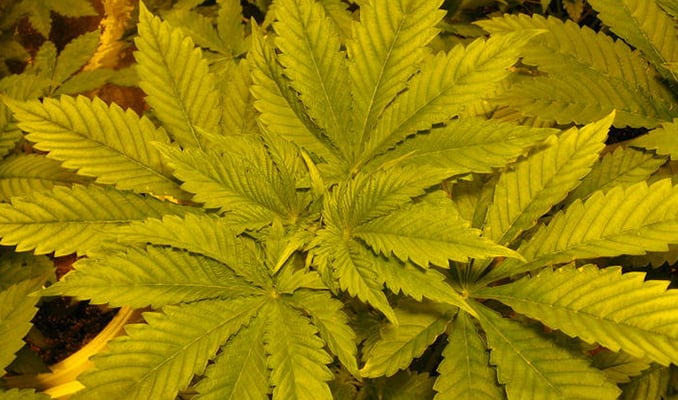Nitrogen Deficiency In The Cannabis Plant
Published :
Sep 14, 2017
Categories :
Cannabis cultivation

Nitrogen is an essential part of plant growth. It is the main component of chlorophyll and is a primary ingredient in amino acids, DNA and RNA. Identifying a nitrogen deficiency in your cannabis early means healthy crops and larger yields.
Nitrogen is the “N” in the essential NPK nutrient equation and makes up approximately 78% of Earth’s atmosphere. It is a predominant component of chlorophyll, which plants use in the process of photosynthesis. Nitrogen undergoes chemical reactions with other elements to form entirely novel compounds, which plants use for essential biological functions. It is also a primary component of amino acids - the building blocks of plant life and all life on earth.
Plants cannot absorb nitrogen directly from the atmosphere, so nitrogen ions are taken up from ammonias or nitrates through the root system. Maintaining the overall well-being of plant leaves, trunks, roots and branches requires nitrogen, among other nutrients, to stay healthy. Of all the essential nutrients, nitrogen is required in larger amounts to ensure ideal crop development. Proper amounts of nitrogen ensure robust and vital growth. This is especially true concerning cannabis.
SYMPTOMS
Nitrogen is soluble and will be move around the plant to where it is needed most. When plants aren't getting enough nitrogen, they will "steal" it from the older parts of the plant to feed new growth.
Cannabis is a nitrogen-hungry plant, so knowing how to identify a nitrogen deficiency is important. With a nitrogen deficiency:
* The older lower leaves will turn yellow, go soft and "curl in" on themselves.
* Leaves then turn grey or brown, dehydrate, crumple and fall off.
* The leaf stems may turn pinkish red.
* If the new growth on the plant is turning yellow, it will be another problem. Nitrogen deficiencies always affect the lower, older leaves first.
* Yellowing between leaf veins.
* Wilting and drooping.
It is normal for leaves to yellow and droop on the older parts of plants, especially with large plants. It becomes a problem when an excessive amount of leaves are affected. Especially if the problem creeps up the plant. It is important to identify and treat a deficiency during the vegetative phase as plants will slow their growth and lose future flowering sites.
During late flowering, nitrogen deficiency is not so much of a problem. Plants naturally steal nutrients from the leaves to boost bud growth. Yellowing at this phase is normal and desired. Too much nitrogen during flowering inhibits bud growth and can affect final aromas and flavours. You will notice that bloom nutrients are always low in nitrogen.

NITROGEN INDOORS
Indoor nitrogen deficiencies are less common with contemporary cannabis growing. Modern nutrients are specifically designed for the nitrogen-demanding cannabis plant. Symptoms of a deficiency may be caused by a pH problem at the root ball, affecting nutrient uptake. Check your water regularly.
NITROGEN OUTDOORS
Similarly, outdoor nitrogen deficiencies are rare. The savvy organic grower will use nitrogen-fixing companion plants. For example, clover, alfalfa, or bush beans. A well-prepared soil and appropriate top covers will supply enough nitrogen for the plant’s entire life. Even giant ones.
SOLUTION
If you haven't been using nutrients, it is time to start employing a commercial, cannabis-specific nutrient. If the plants don't show a rapid recovery, then the problem lies elsewhere.
Nitrogen can only be fixed and made available to plants through biological and chemical fixation from external sources. For environmental reasons, avoid ammonium or urea-based sources. Their production can harm the planet. Nitrate sources are preferred as they are the most abundant and are better retained within the soil. Nitrate of soda or a commercial nitrogen booster are suggested.






































